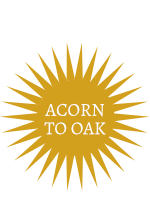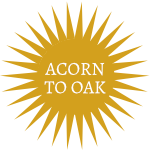
In Early Childhood Education, loose parts are a manipulative toy which can be used in open ended play. Loose parts can be anything at all, and they can be used in an endless number of ways. I love to use natural materials in our loose parts play, and it has become somewhat of a collection for me. Now I look at anything in my home and hoard it in our loose parts box before throwing it away.
Loose parts that are derived from nature can be multi-sensory. This means that they stimulate more than one sensory system. A natural loose part can be stimulating to your sense of sight, smell, taste, sound and touch. Let’s use a pinecone as an example. Visually, you can observe the natural spiral pattern that it makes. You can stamp it in play dough and notice the spiral impression that it makes. You can notice it’s earthy smell, and feel its small pricky sides.
Here are some examples of some affordable, or even free (reduce, reuse, recycle) loose parts that you can easily find in nature or laying around your home.
- Pinecones
- Acorns
- Leaves
- Flowers
- Dried Orange Slices
- Popsicle Sticks
- Buttons
- Rocks
- Napkin Rings
- Wood Beads

10. Clothespins
11. Round Clothespins
12. Paperclips
13. Chip Clips
14. Cork Plugs
15. Cork Balls

16. Seashells
17. Coconut Shells

18. Walnuts
19. Pistachios

20. Crystals
21. Recycled Cardboard
22. Tin Cans
23. Jars
24. Wood Slices
25. Macrame Rings

26. Playsilks
27. Bandanas
28. Blankets
29. Handkerchiefs
30. Yarn
31. Macrame Beads

32. Popsicle Sticks
33. Sticks
34. Marbles
35. Glass Pebbles

36. Egg Cartons
37. Egg Cups
38. Wood Balls
39. Ribbon
40. String
41. Sushi Mat
42. Wooden Spoons
43. Cutting Boards
44. Felt Balls

45. Bottle Caps
46. Jar Lids
47. Blocks
48. Feathers
49. Golf Tees
50. Dice







